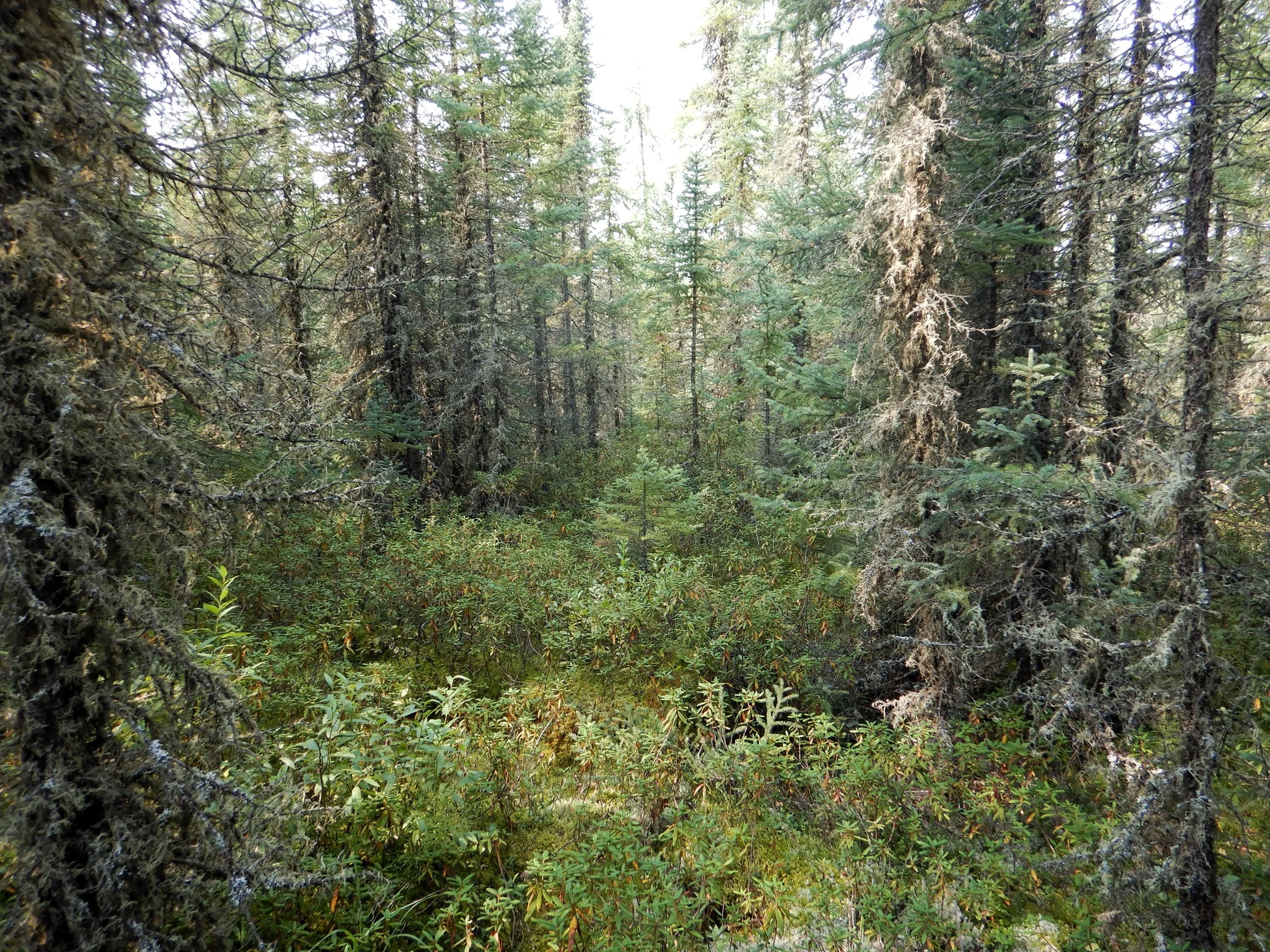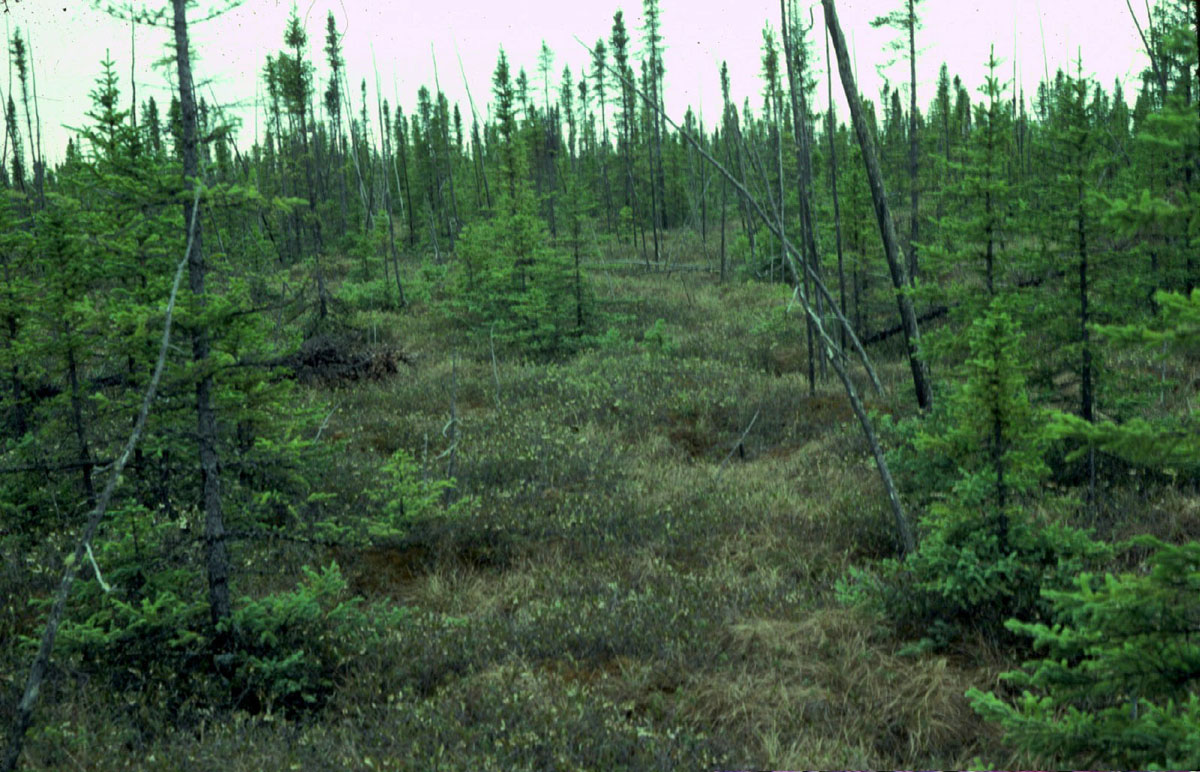Canadian Wetland Classification System
The Canadian Wetland Classification System (National Wetlands Working Group 1997) is based on a hierarchical system, which includes (1) wetland class, (2) wetland form and (3) wetland type. The five wetland "classes" are differentiated by their developmental characteristics and the environment in which they exist. The five classes are: bog, fen, marsh, swamp, and shallow water. Some wetlands accumulate peat (partially-decomposed organic matter) and are called peatlands. Bogs and fens are the dominant peatland classes in Alberta, although some swamps and marshes can also accumulate peat. In contrast, shallow open water wetlands and many marshes and swamps do not accumulate peat.
Bogs are peat-covered wetlands (peatlands), in which the vegetation shows the effects of a high water table and a general lack of nutrients. The bog surface is often raised relative to the surrounding landscape and isolated from mineralized soil waters. The surface waters of bogs are strongly acid and the upper peat layers are generally nutrient poor. At least 40 cm of peat is present. The plant community is dominated by cushion forming Sphagnum mosses (peat mosses), ericaceous shrubs and black spruce trees.
Fens are peatlands characterized by a high water table, but with very slow internal drainage by seepage. Similar to bogs, the surface water in fens is also generally nutrient poor and the peat layer is at least 40 cm thick. The vegetation in fens usually reflects the water quality and quantity available, resulting in three basic types: graminoid fens without trees or shrubs, shrub fens, and treed fens. Dominant plants include black spruce, tamarack, sedges, grasses, and various mosses.
Marshes are wetlands that are periodically inundated by standing or slowly moving water and hence are rich in nutrients. Marshes are mainly wet, mineral-soil areas, but shallow, well-decomposed peat may be present. Marshes are subject to a gravitational water table, but water remains within the rooting zone of plants for most of the growing season. They are characterized by an emergent vegetation of reeds, rushes or sedges and the absence of woody vegetation.
Swamps are wetlands where standing or gently moving waters occur seasonally or persist for long periods, leaving the subsurface continuously waterlogged. The water may also be present as a subsurface flow of mineralized water. The water table may drop seasonally below the rooting zone of the vegetation, creating aerated conditions at the surface. Their substrate consists of mixtures of mineral and organic materials, and peat deposited may be present. The vegetation may consist of dense coniferous or deciduous forest, or tall shrub thickets.
Shallow open water wetlands, also known as ponds or sloughs, are relatively small bodies of standing water, representing a transition stage between lakes and marshes. The surface waters impart an open aspect, free of emergent vegetation, but floating, rooted, aquatic macrophytes may be present. The depth of water is usually less than 2 m in mid-summer.
These five wetland classes can be further recognized by their "form" based on surface, water, and underlying mineral soil characteristics. The class/form combinations can be further described by their "type" based on the vegetation communities associated with them. A more detailed description of the five wetland classes along with their forms and types can be found in:







